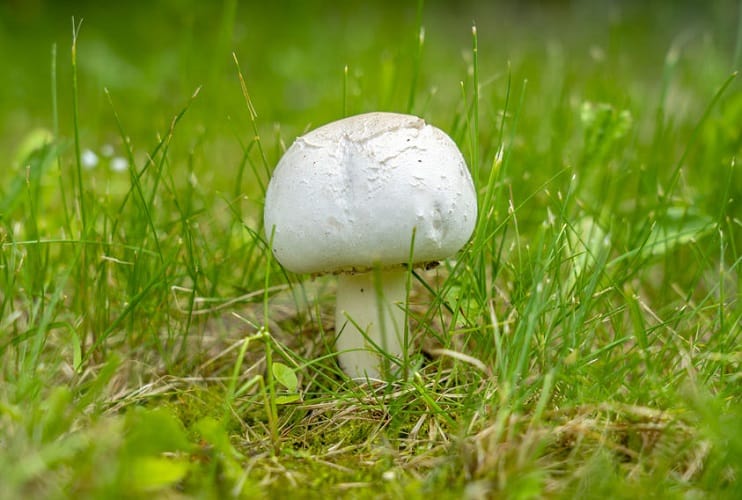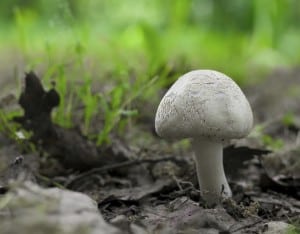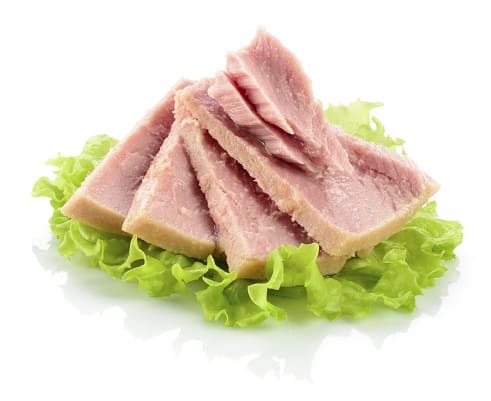 The last time we checked in on vitamin B3, AKA niacin, we judged it to be extremely promising, but still cloaked in mystery.
The last time we checked in on vitamin B3, AKA niacin, we judged it to be extremely promising, but still cloaked in mystery.
This essential dietary nutrient, found in chicken, tuna, mushrooms and turkey, has a raft of great studies to its name. In one, a 5% concentration niacinamide cream reduced acne by 69% after 8 weeks, in 60 lucky female volunteers. In another, niacinamide defeated the antibiotic clindamcyin, reducing acne by 82% vs 68% after 8 weeks.
The problem was twofold. Firstly, one study was negative, opening up the chasm of doubt. Secondly, niacin’s exact mechanism was unclear. If one study failed for vitamin E, then we wouldn’t need to worry, because we know that it works as a fat-soluble antioxidant. We could deduce that the study participants probably had red, inflammatory acne and would have benefited more from zinc.
With vitamin B3, we didn’t know. Vitamin B3 also suppresses neutrophils, immune system agents which release free radicals, but a single 2006 study found great benefits for oily skin. Vitamin B3 also has antioxidant properties. Perhaps it’s a combination of all three.
However, thanks to a new study, the fogs of mystery have finally dissipated. After much bouncing around, the vitamin B3 ball has landed in the court of oily skin.
A step towards greatness
Our study wasn’t performed on real life acne sufferers, but scientists did test human sebocytes, sebum (oil) producing skin cells.
They started by bathing the oil glands in three substances known to cause oily skin: testosterone, anandamide and arachidonic acid (more on them later).
Firstly, there’s two common forms of vitamin B3. Niacin (AKA nicotinic acid) is the most active form in the body, the form in food, while niacinamide (nicotinamide) is almost structurally identical and can be reconverted almost instantly. A classic difference is that only niacin causes the warm “niacin flush”. Today’s study tested niacin, so we’re witnessing vitamin B3 in all it’s potential.
After 48 hours, niacin was introduced to the mix. Following another 48 hours, niacin achieved nothing in sebocytes producing normal amounts of oil. In scientific terms, niacin “had no effect on the homeostatic sebaceous lipogenesis“…
…but in the cells pumping out oil in a raging torrent, niacin achieved massive reductions. It reduced sebum even at tiny concentrations of 1µmol/L.
Better, niacin decreased the multiplication (proliferation) of sebocytes too. The required concentrations were higher, at 10-100µmol/L, but still easily applicable.
Interestingly, niacin had no effect on the inflammatory chemicals produced by sebocytes, including acne villains like interleukin-8, interleukin-1a, and TNF-a. It worked neither in isolation, nor after inflammation was purposefully stimulated using the chemical lipopolysaccharide.
On one hand, we could be greedy and wish that vitamin B3 accomplished everything. On the other, it’s great to have clarity, that B3 specialises in oily skin.
That said, in human skin, just as many inflammatory chemicals are released by keratinocytes, the main bricks of your skin’s outer layer, usually in response to p.acnes bacteria. Therefore, it’s possible that niacin still works for them.
For side effects, there’s more good news. The scientists found that 100µmol/L caused no healthy cell death, no necrotic or apoptotic events.
Why vitamin B3 is particularly special
 These results are revolutionary already, but there’s one discovery which if proven, may take vitamin B3 to the next level, a higher plane beyond even sea buckthorn berry oil and green tea. It would stand toe to toe with vitamin A as the king of oily skin remedies.
These results are revolutionary already, but there’s one discovery which if proven, may take vitamin B3 to the next level, a higher plane beyond even sea buckthorn berry oil and green tea. It would stand toe to toe with vitamin A as the king of oily skin remedies.
It was discovered that vitamin B3 reduced oily skin regardless of the mechanism behind it. The three sebum-stimulating compounds were…
ONE: anandamide, a natural “bliss chemical” structurally related to THC in cannabis. Anandamide is manufactured naturally by the human brain, but it’s also a little known chocolate compound. It’s part of the endocannabinoid family, and its intoxicating feelings may explain chocolate addiction.
Recently, cannabinoid receptors have been discovered all over the body. They were designed for our own anandamide, but cannabis can also stimulate them as a happy/strictly illegal consequence. Your sebaceous glands are dense in cannabinoid receptor 2 (CR2), and anandamide is known to bind to them.
This then upregulates a gene called PKAR, with tight links to oily skin; accutane also acts on this gene, turning your skin into the Sahara desert. NOTE: if you’re wondering, then yes, anandamide could be one reason why chocolate causes acne.
TWO: arachidonic acid, a polyunsaturated fatty acid making up 9% of fats in the skin’s outer layer. No, it has nothing to do with spiders; it’s the skin’s raw ingredient for manufacturing inflammatory chemicals, orchestrated by COX-2, the master inflammatory regulator. Arachidonic acid stimulates the sebaceous glands through pathways called PPAR-γ, and protein kinase C.
THREE: testosterone, the androgenic hormone that makes muscle possible, makes a deep voice possible, but also makes oily skin possible. Testosterone has the simplest mechanism, binding directly to androgen receptors in the sebaceous glands.
The more serious villain is actually DHT, created from testosterone using the 5-alpha reductase enzyme. Because you need testosterone and DHT for a sharp mind and boundless energy, my main recommendation is blocking androgens with topical treatments, like sea buckthorn berry and licorice.
Vitamin B3 easily thwarted 3 very different oily skin villains.
Niacin reduced oil production “irrespective of the underlying signalling pathways“, and the answer was the HCA2 molecule. HCA2 was formerly known as “niacin receptor 1”, and is the main receptor that niacin interacts with throughout the human body.
Take the niacin flush. This harmless burst of warmth to the face, spreading down the arms and torso in a tingling red colour, is the main drawback of taking niacin supplements. The flush has been known for 100 years, but recently, it was discovered that silencing the HCA2 gene completely ended it.
Guess what – in today’s study, silencing the HCA2 gene also prevented oily skin.
Our study was also the first to find that sebaceous glands contained HCA2 receptors. Like in your blood vessels, or your normal skin cells, niacin can bind with those receptors. HCA2 is niacin’s very own version of the retinoid X receptors (RXR) which vitamin A works through.
This is what makes niacin really special. It’s not another green tea, where it happens to block 5-alpha reductase, and then calm oily skin. Green tea is powerful itself, but niacin has receptors specifically designed for it, like a key and a lock.
The old 2006 study
There’s a lot of great acne remedies out there which receive one promising study, but then float around in an acne void, a place between two worlds where they never get proven.
For 13 long years, vitamin B3 roamed this wilderness with them, but now things have changed. Today’s study finally reinforces a 2006 one where 50 Japanese patients applied a 2% niacinamide cream twice daily, while 50 used a placebo. On average, the groups started with equal sebum excretion rates (SER), but after 6 weeks, the niacinamide group enjoyed significantly lower scores. Meanwhile, 30 Caucasians also applied 2% niacinamide. Strangely, after 6 weeks, their SER didn’t change, but their casual sebum level (CSL) did, the oil sitting on their face vs the amount being produced.
The study used niacinamide rather than straightforward niacin. Therefore, our evidence could be diluted, but it’s actually an advantage, because niacinamide doesn’t activate HCA2. Meanwhile, niacin can easily convert to niacinamide, giving it double strength; it might bind to HCA2 receptors, and work through whatever secret mechanism niacinamide used here.
Evidence from the real world
 In the main article, we discussed how vitamin B3 deficiency only affects 2% of US citizens, but that a classic symptom is pellagra, a skin condition characterised by freaky, snake-like patterns as though you’ve just been sorted into Slytherin.
In the main article, we discussed how vitamin B3 deficiency only affects 2% of US citizens, but that a classic symptom is pellagra, a skin condition characterised by freaky, snake-like patterns as though you’ve just been sorted into Slytherin.
Pellagra causes flaky skin, dry skin, and hard skin without the advantage of becoming bulletproof. But there’s one particularly interesting symptom – dyssebacia. That’s when sebum fails to dissolve, and builds up in your pores, forming hard white plugs which project onto the skin.
These sebum lumps start on the nose and spread to the chin and forehead. The lesions aren’t red and inflamed – just accumulations of unrestrained oil. According to an old report from 1940, dyssebacia gives the skin “a rough appearance which feels like shark skin or sandpaper“.
Now, I don’t know whether that scientist was stroking a cuddly pet shark every evening, but the connection between dyssebacia and straightforward oily skin is clear as day. Nowadays, pellagra is almost extinct. It’s confined to the third world, where thin soils and insufficient rainfalls mean that local populations scrape by on maize and cannot eat meat. But if it was still rampant, perhaps people would have had a brainwave.
Another great real world example is heart health. For decades, before statins plotted their course to world domination, niacin was a go to remedy for lowering LDL cholesterol and raising the good HDH cholesterol. Its extreme cheapness helped, although recently, the niacin flush has cost it popularity. But anyway, niacin achieves this by binding to HCA2 receptors. In mice with rare genetic HCA2 deficiencies, niacin’s benefits for cholesterol disappeared, like with our oily skin study.
Niacin seems to be the go-to vitamin for any disease involving excessive oils (lipids).
Analysis time
The first big question is how to apply vitamin B3, and our answer hasn’t changed from the previous article. Because deficiency is so uncommon, topical creams easily have the upper hand. If your body is flooded with niacin already, it will naturally limit the quantity being deployed to the skin, but with topical niacin you can bypass those barriers.
It’s just like vitamin E or vitamin C. You can outsmart your own body, and rub a cream into your face with hyper concentration. Plus, the amazing acne studies all tested topical niacin.
It’s possible, however, that you are a rare person with niacin deficiency. Vegans are at risk because chicken, tuna and turkey are three of the ultimate sources.
Are there any last minute roadblocks? Firstly, you won’t instantly cure oily skin if you lack vitamin A as well, but you can still eradicate a big chunk. It’s possible that niacin’s benefits might fade after several months. The HCA2 receptors might downregulate like how dopamine receptors downregulate in the brain after snorting too much cocaine (or eating sugar). However, that’s less likely for an essential nutrient compared to random plant compounds which the body isn’t used to. Plus, it’s random speculation anyway.
It’s also possible that raining down niacin beyond what your bloodstream naturally deploys has hidden dangers. Maybe it’s restricted for a reason.
But overall, niacin is hard to criticise. Out of all our recent topical treatments, the three lactobacilli gut bacteria strains are the ones most likely to trip up somehow, because they’re effectively on an alien planet. Niacin looks as sturdy as an ancient oak doorway. Because sebum didn’t fall to below healthy levels, we know that niacin has hard limits. We’re not in the realm of too good to be true.
There might be another chapter to the tale, as the scientists speculated that vitamin B3 could alter sebum’s composition. Acne prone oil is known to be different; one example is having less vitamin E and linoleic acid.
Conclusion
The acne remedy of vitamin B3 has officially taken a big step forward.
In fact, I would now pair niacin alongside vitamin A as the number one topical treatment for oily skin. The only caveat is lacking the studies of green tea or even turmeric, but niacin is also an essential nutrient. The future is bright for vitamin B3.
Recently, while browsing the acnesphere, you might have read wild tales of jojoba oil’s oily skin powers. That because jojoba oil is 97% wax, it can trick your face into thinking that it’s making enough oil, and therefore downregulate its own production. This belief is stated as though fact, but the evidence is as sturdy as a bridge made from sand. Yes, human sebum is 37% wax, but there’s no way that the human body would mistake the oil of a spiky green shrub growing in Mexico for its own perfectly designed product.
If you see similar ravings about vitamin B3 in one year’s time, however, they’ll be 100% true.
Thanks for reading!

Hi Richard would taking 500mg of nicotinamide orally have an effect as well? I’m not a huge fan of applying a whole lot of creams, gels, oils…
It depends on whether you’re deficient. If so, then it will be great, but otherwise, the body might naturally limit the quantity being deployed to the skin when you take it orally. 500mg is a high dosage, but not at serious danger levels. My guess is that it will have some benefits but won’t equal topical B3. Fortunately, this is just one natural acne strategy.
Is there a topical B3 you can recommend? Does it work on all types of acne, like hormonal acne? Thanks
Honestly the market for vitamin B3 serums/creams is very poor right now, because it’s such a delicate substance, unlike tamanu oil, for example, which you just squeeze out of the nut and pack into a bottle. Vitamin B3 serums tend to have huge amounts of preservatives, but this one is acceptable.
https://www.amazon.com/Organic-Niacinamide-Anti-aging-Wrinkles-Collagen/dp/B01LR0EZV6?th=1
The main worry is Phenoxyethanol, which is no supervillain, but can cause contact allergies in sensitive people. Another problem is that there’s so many bonus ingredients that it may be impossible to tell whether it was actually niacin that succeeded, but then again, if it clears your acne then that’s mission accomplished. It could work on hormonal acne, but there’s no guarantees since hormones are such an internal condition. Niacin is great for purely oily skin, unless you mean hormones running wild which are causing oily skin? In which case it would work well.
The Ordinary does a straight niacinamide powder which comes with a little measuring spoon and mixes easily into your regular moisturiser or lotion – although best to avoid ones containing vit c apparently. It definitely reduces skin oiliness too, as you’ll discover that day you decide to experiment and add a bit extra (ouch) less is more here. Plus it’s very cheap, well worth a go.
Taking a supplement can supposedly help heal a leaky gut. Might be something worth looking into… I did notice some benefit last time a took niacin in a capsule form.